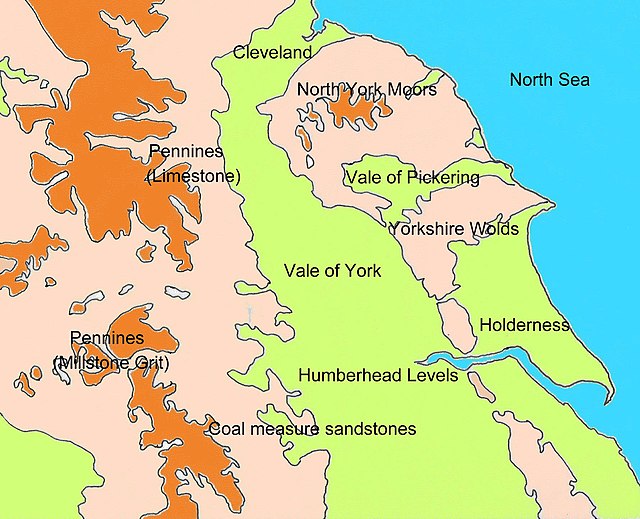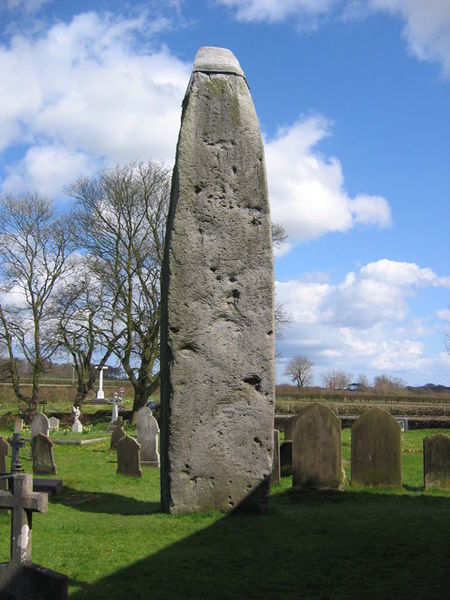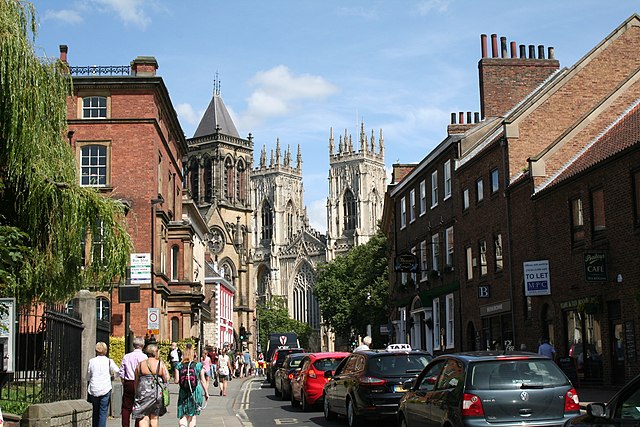Yorkshire is a historic county of England, centred on the county town of York. The region was first occupied after the retreat of the ice age around 8000 BC. During the first millennium AD it was inhabited by celtic Britons and occupied by Romans, Angles and Vikings. The name comes from "Eborakon" an old Brythonic name which probably derives from "Efor" or "the place of the yew-trees." Many Yorkshire dialect words and aspects of pronunciation derive from old Norse due to the Viking influence in this region. The name "Yorkshire", first appeared in writing in the Anglo-Saxon Chronicle in 1065. It was originally composed of three sections called Thrydings, subsequently referred to as Ridings.
The natural sub-regions of Yorkshire
The main rivers of Yorkshire.
The Rudston Monolith, almost 26ft high, close to Rudston Parish Church of all Saints
Thornborough Henge
Yorkshire is an area of Northern England which was historically a county. Despite no longer being used for administration, Yorkshire retains a strong regional identity. The county was named after its original county town, the city of York.
Image: 2015 Swaledale from Kisdon Hill
Image: York Minster (geograph 4137528)
Image: Flamborough Head, East Yorkshire, UK, 08082015, jcw 1967 (2) (32756164823)
Statue of Constantine I outside York Minster.








